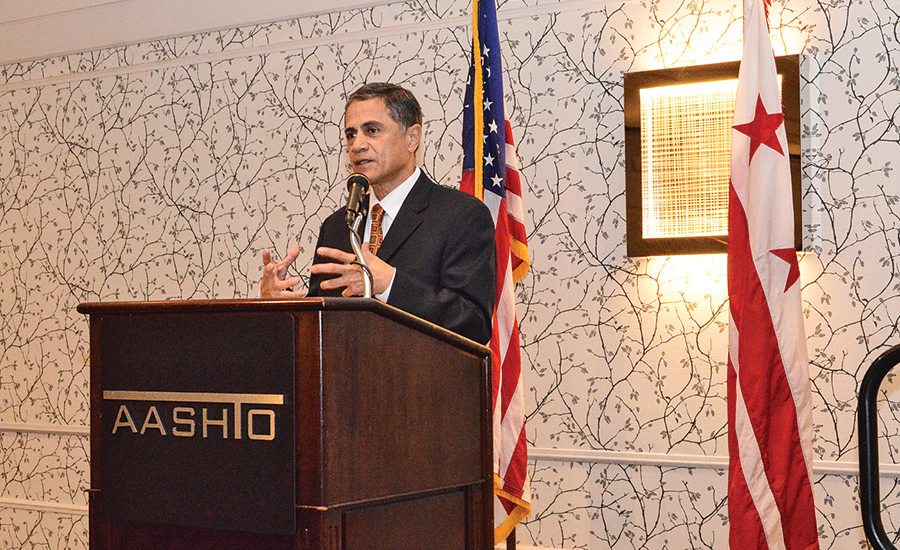With the $305-billion Fixing America’s Surface Transportation Act on the books for nearly three months, the focus now has shifted to moving the five-year measure’s 2016 funding out to the states and turned into construction contracts. As the FAST Act implementation phase heats up, the U.S. Dept. of Transportation is moving to set up the statute’s new programs, and state agencies are gearing up for bid lettings for this year’s fast-approaching construction season.
DOT Deputy Secretary Victor Mendez told the American Association of State Highway and Transportation Officials’ annual Washington briefing on Feb. 24, “In order to make this a reality, we know we have to get busy to implement the FAST Act.” He added, “At the federal level, we are working very hard to make sure that these funds get to all of you as quickly as possible.”
DOT is rolling ahead on a key FAST Act initiative, issuing on Feb. 26 a funding-availability notice for the $800-million 2016 installment of the law’s $4.5-billion, five-year Nationally Significant Freight and Highway Projects program. Applications for what DOT has dubbed FASTLANE grants are due by April 14. Aid can go for highway, maritime or rail projects and cannot exceed 60% of a project’s costs.
Michigan DOT Director Kirk Steudle says his agency will apply for a freight grant. “A heavy industrial state like Michigan—we have a lot of freight. … We have some significant freight bottlenecks,” Steudle says.“We’re going to very aggressively go at that.” But competition is expected to be intense for the new grants.
The FAST Act lifts the federal highway obligation ceiling this year by $2 billion, or 5%, to $42.4 billion, with 2% annual hikes over the next four years. “That FAST Act was critical for the state of Missouri,” says Patrick McKenna, state DOT director. He says Missouri’s 2017-21 highway and bridge contract awards will reach $700 million to $860 million a year, more than double the levels in the 2016 five-year state authorization. McKenna says, “It doesn’t get us to a condition that we consider to be acceptable, but we don’t fall a lot further behind over that period of time.”
What state DOT leaders like most about the FAST Act is its five-year span, a welcome change from being forced to operate under five stopgap extensions, from September 2014 to December 2015, while Congress struggled to pass a multiyear bill. Jim Tymon, AASHTO chief operating officer, notes that 93% of the new law’s highway funding—about the same as before—will be distributed to states by existing formulas, making the funding stream highly predictable.
Peter Garino, Rhode Island DOT’s deputy director, says, “It’s dependable money, which is important. It’s not just additional money for a short period of time, but it’s for an extended period of time.”
Brian Ness, Idaho Transportation Dept. director, says, “We don’t have to guess where we’re going to be in the next few years. We can plan more readily around our state program with the federal money coming in.”
Colorado DOT Executive Director Shailen Bhatt says that, in the two years before the FAST Act was passed, his agency already had increased its highway construction program to about $750 million a year from $500 million. Bhatt says the FAST Act has been a big plus “because we were ramping up the program, and now we’ve got certainty so that we don’t have to turn the spigot off and shut things down. So, for us, this just gives us more confidence to go full speed ahead.”
The FAST Act has dovetailed with some states’ moves to raise their transportation revenue. For example, Rhode Island Gov. Gina Raimondo (D) on Feb. 11 signed a bill to launch a bridge-improvement plan funded by new bridge tolls on commercial trucks.
Garino says the FAST Act will allow the state to use a different type of bonds, which will accelerate the upgrades and save an estimated $1 billion in construction costs.



Post a comment to this article
Report Abusive Comment